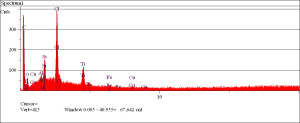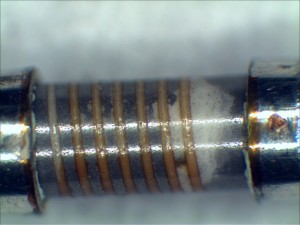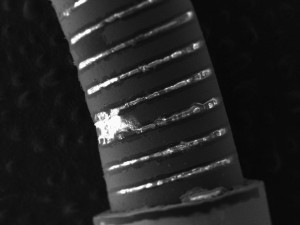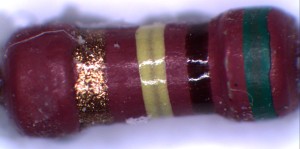Resistor Contamination on Failed 510K
Gideon Analytical Labs received two failed 510K, two used 510K operating for about 3 weeks, and two virgin resistors for failure analysis. A resistor is a component of a circuit that resists the flow of electrical current. It has two terminals across which electricity must pass, and it is designed to drop the voltage of the current as it flows from one terminal to the other. Resistors are primarily used to create and maintain known safe currents within electrical components. The epoxy coating on the failed and used resistor was not as hard as the virgin part. The coating peeled easily and exposed the underlying aluminum metal on the alumina shaft. Therefore, the first suspicion is that something in the process is altering the coating integrity of the epoxy on the resistor. All the resistors were examined for contamination on the epoxy coating by using SEM-EDS to identify any detrimental elements. There is a chloride peak on top of the coating. Normally, chlorides do not attack the epoxy coating nor do they diffuse through the coating to the aluminum metal. As these chlorides were found on the top of the coating, the coating was marked as to the location. SEM-EDS identified chloride. The Si is coming from residual silicates used as binders epoxy coating and the silicone potting material. The chloride was coming from a cleaning product before conformal coating. Gideon Analytical Labs can solve all kinds of contamination issues with components and IC. Use Gideon the next time your company needs IC or component failure analysis.

Large chloride peak on coating

Resistor with conformal coating removed

Micrograph of the open spot

Resistor with protective Coating